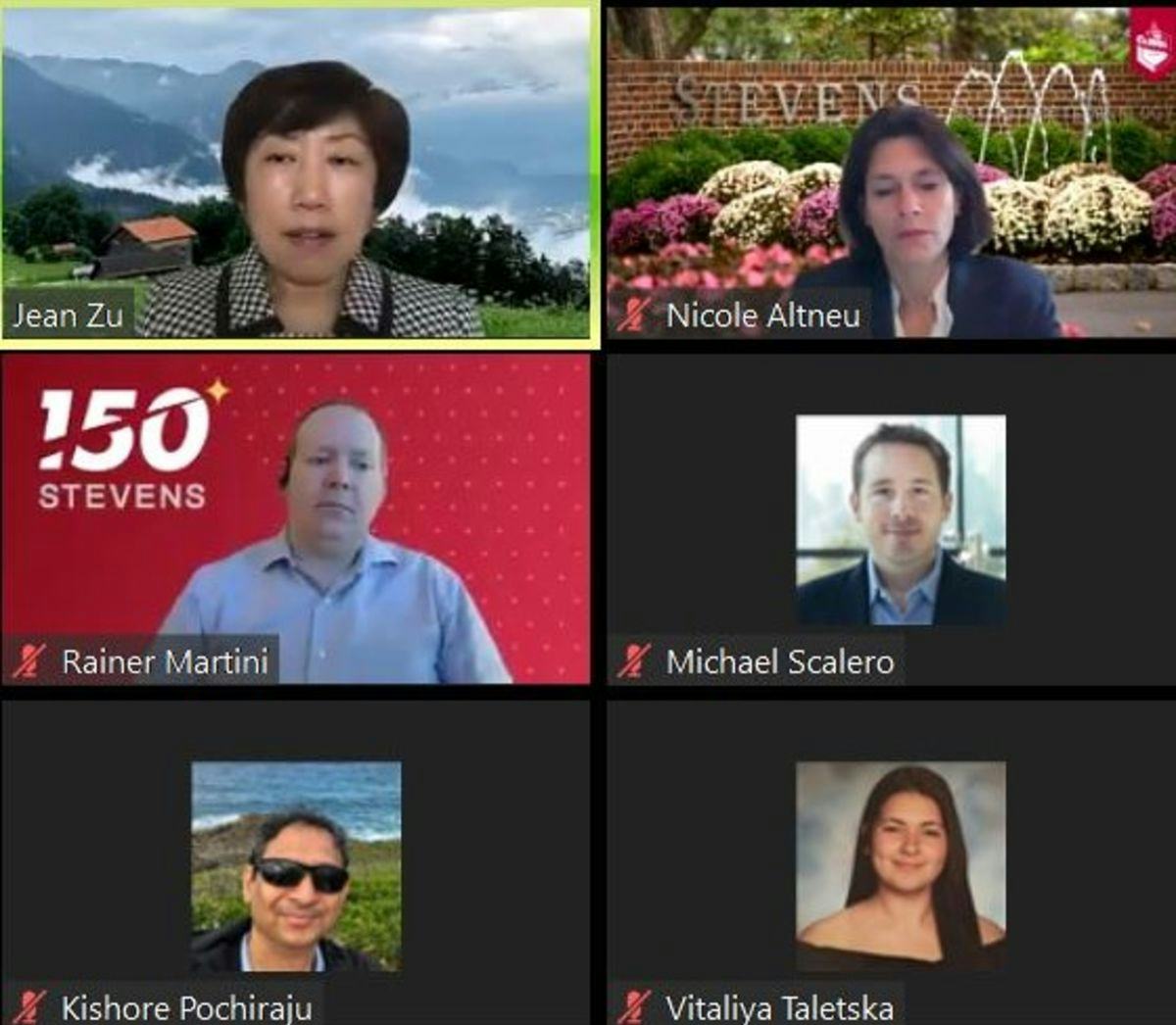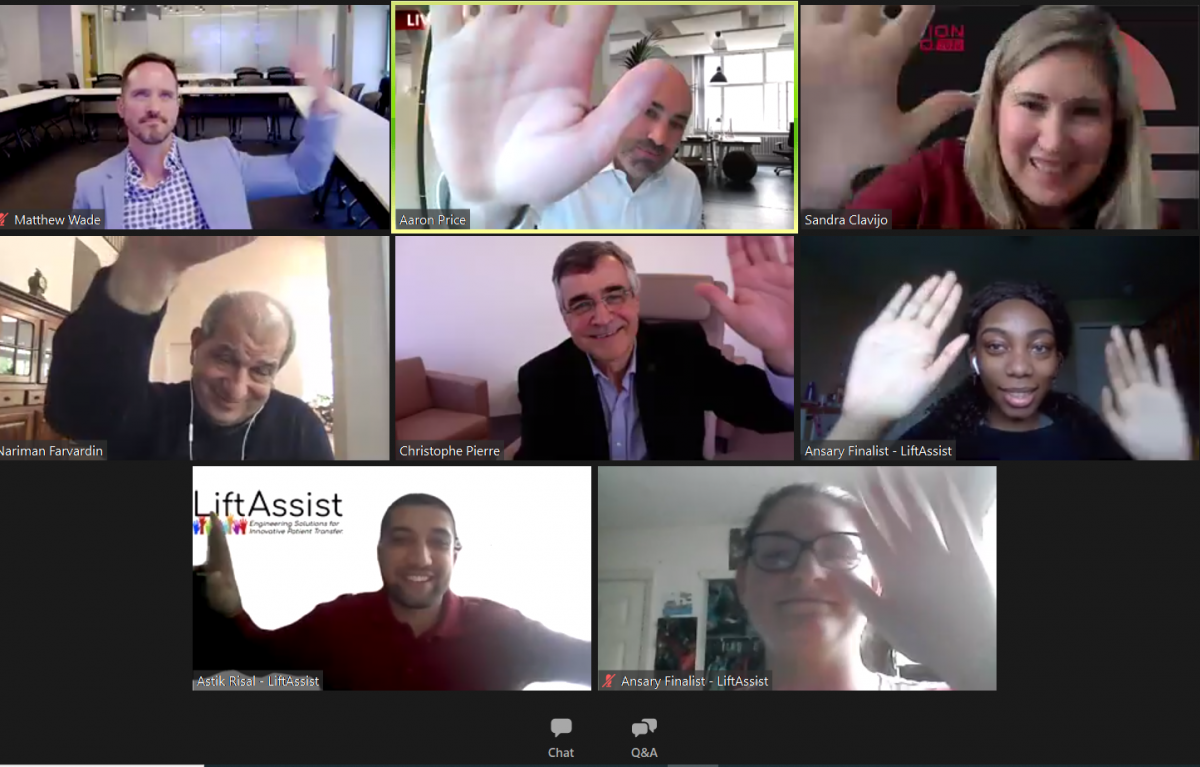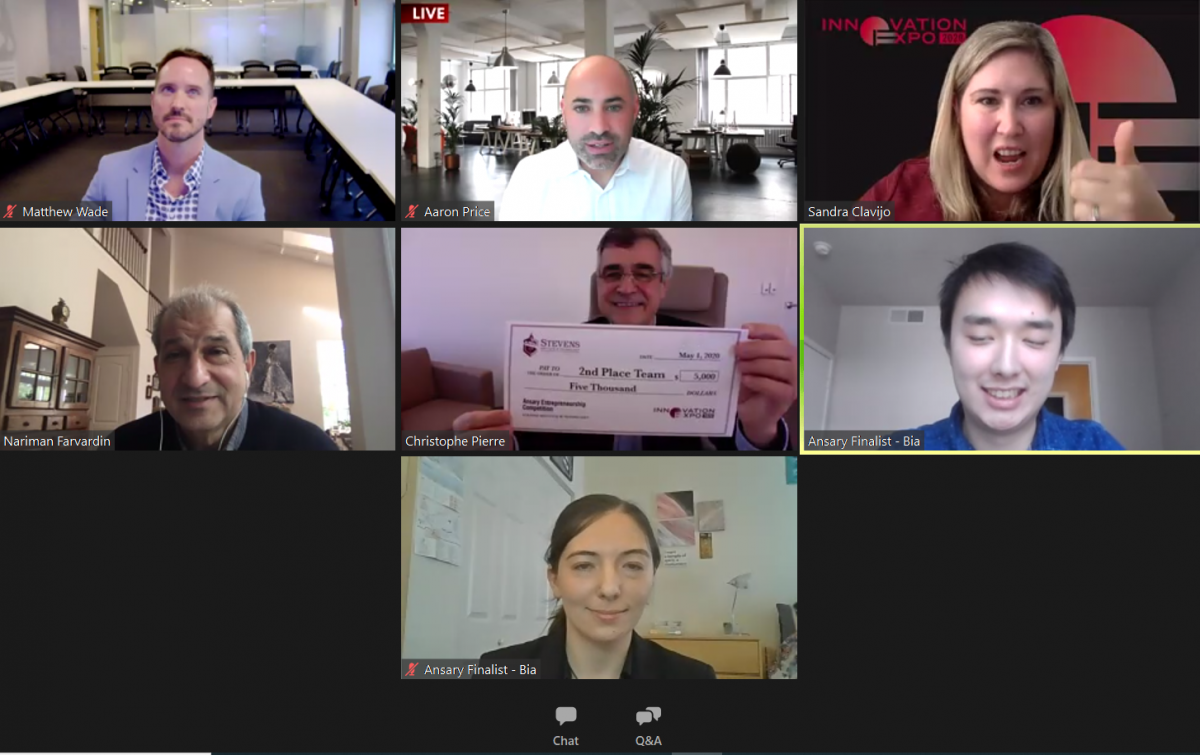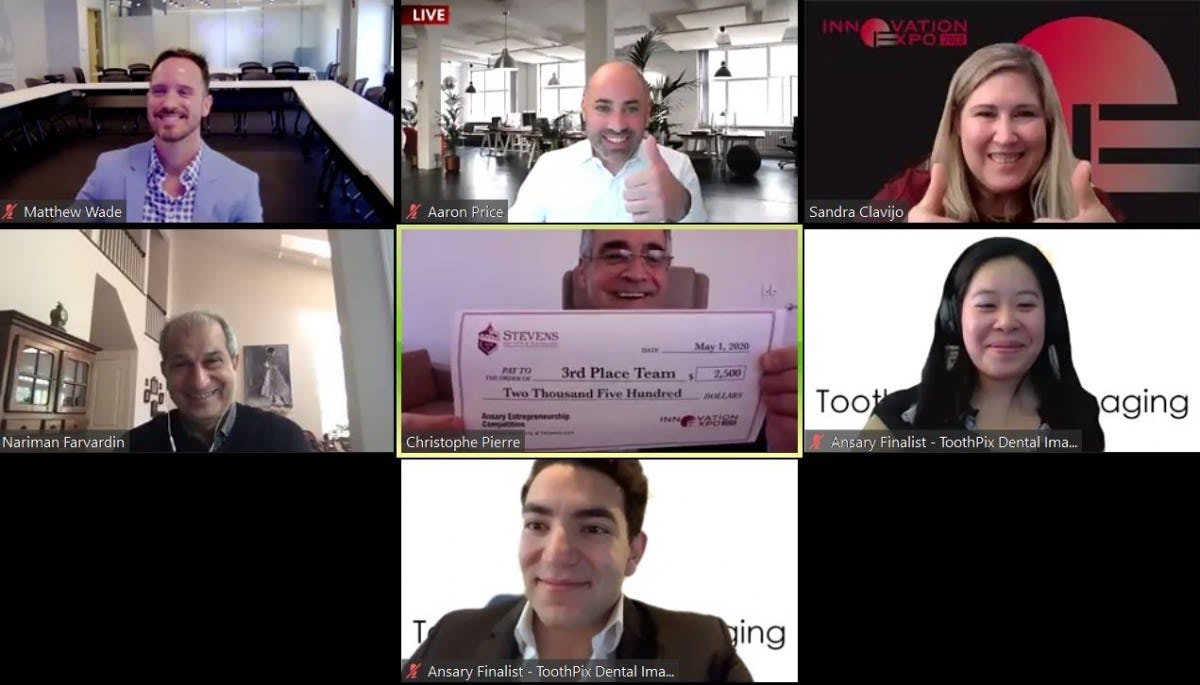As the World Looks to Science and Technology to Fight COVID-19, Stevens Innovation Expo Goes Virtual
“It is my great pleasure to welcome you to the 2020 Stevens Innovation Expo.”
With those words, Stevens Provost and Vice President for Academic Affairs Christophe Pierre kicked off the university’s annual Innovation Expo from a remote location.
The ongoing global health crisis caused by COVID-19 made certain this year’s innovation expo would be like no other.
Rather than traveling to Stevens to view senior design projects spread across multiple venues on campus, attend talks by distinguished faculty members, participate in live interactions with student teams and learn which competing teams would claim top prizes in a high-stakes pitch competition, visitors logged on to devices from home — and had the Expo come directly to them.
“This year the global pandemic has forced us to hold the Expo virtually. But that will not stand in the way of our excitement,” Pierre said in his opening remarks, thanking staff and faculty who worked hard to “reimagine the Expo as an online event.”
The day-long virtual event attracted hundreds of online visitors, with some senior design projects attracting more than 1,000 participants.
And as the world looks urgently to scientific expertise and life-saving technologies to help combat a deadly virus that continues to put lives in jeopardy and paralyze economies around the world, this year’s Expo demonstrated how Stevens students will be at the forefront of solving the coronavirus pandemic and other challenges facing global society.
Stevens seniors engage with online audiences as they showcase their innovations
Applying their imagination and Stevens know-how to real-world problems, more than 700 students worked on approximately 180 senior design projects throughout their final academic year that were as diverse as an autonomous robot for building trenches and strategic business plans for real companies such as media conglomerate Thomson Reuters and Prime Cycle, an indoor cycling studio located in downtown Hoboken.
Online participants had the opportunity to interact in real time with students from 20 teams representing all four Stevens schools.
Capstone projects like these underscored the ingenuity, diversity and hard work of the graduating class:
Team BUD-E System delivered an engaging presentation of a new canine prosthesis that elicited a steady stream of questions from attendees wanting to learn more about the innovation, as well as the test subject – Buddy, a German Shepherd whose left hind limb was amputated.
Meanwhile, team members behind Aging in Place Alzheimer's Care System (APACS) held court discussing the integration of robotics in smart homes and elder care facilities to help people with Alzheimer’s and their caretakers.
For team O-Space, the current health crisis brought a COVID-19 focus to their project for improving workspace environments and its impact on employee performance and productivity.
Arts and humanities seniors lifted spirits with their creativity and live musical performances. Paige Gartelmann, for instance, a music and technology major, showcased her exceptional piano skills, performing a composition she created as part of a music therapy project, eliciting shout-outs and applause via chat messages.
“Out of the four pieces I composed for this project, I chose to share, ’Stress Relief,’ because I thought that it would resonate with listeners especially during this time,” Gartelmann explained.
“The fact that our professors worked to make a virtual concert for us to showcase our work showed how much they care about and value us as students, and all of our work.”
An innovative medical device to help frontline healthcare workers wins first place
The top $10,000 prize from this year’s Ansary Entrepreneurship Competition went to team LiftAssist for its design of a manual patient transfer device that could help reduce injuries to clinicians and patients in hospitals and medical facilities.
Team member Astik Risal offered a heartfelt thank you speech to the judges.
“We were excited that the biomedical industry, healthcare industry and judges talked about how important it is right now given how crazy things are in the emergency rooms. For our work to be shown and credited is awesome.”
Second prize ($5,000) went to the team behind Bia Home Energy Management System, an all-inclusive solution to help consumers monitor, manage and reduce electricity usage.
Third prize ($2,500) went to team ToothPix Dental Imaging for its proposal for a next-generation digital scanning system that could potentially revolutionize the future of dental imaging.
Judith Sheft, executive director of the New Jersey Commission of Science, Innovation and Technology, was part of the panel of judges who viewed pre-recorded pitches from 18 student teams that had advanced to the finals of the competition.
“The Commission of Science, Innovation and Technology focuses on early stage technology entrepreneurs. So these kinds of businesses that these students are looking to establish are really the kinds of businesses that the commission is looking to be able to support either potentially with some grants if our funding becomes available, [or by] linking them up with the federal grant programs,” Sheft said.
Prior to the announcement of the winners, emcee Aaron Price, a Hoboken resident and renowned entrepreneur, hosted a roundtable discussion with the judges via the video platform Zoom to get their thoughts on the student presentations and the competition.
The virtual format, some said, revealed deep insights into the projects that would have been difficult to obtain in a live setting inside DeBaun Auditorium, the traditional home of the competition.
Kristina Hahn, director of Americas Partner Solutions and Innovation at Google, also judged the competition last year — and was one of many on the panel who found the Slack chat tool particularly effective for gaining a deeper understanding of projects.
“By not having that two minute time frame that we had last year, each person was able to ask questions from different angles. And the students responded to that,” she said.
Feedback like Hahn’s will be given serious consideration by organizers of the event as they look to plan the competition in a post-pandemic future.
Stevens President Nariman Farvardin closed out the remarkable day by expressing his appreciation for all who made the event a success.
“I am inspired and in awe of the way our faculty and students have responded to these very unusual circumstances. It really amazes me how over such a short period of time we took an event called the Innovation Expo, where every year we display nearly 200 projects – the culmination of academic efforts – and convert all of that to this virtual environment, and then on top of that, convert the Ansary Entrepreneurship Competition into a virtual competition.”
To learn more about the projects from the 2020 Stevens Innovation Expo or become involved in supporting next year’s Expo, visit stevens.edu/expo.






